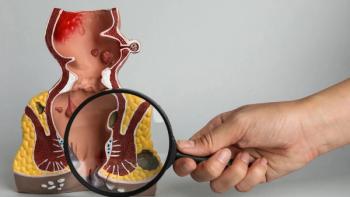
Moving Better With Cancer
How physical therapy restored this cancer survivor's quality of life.
Several years ago, a family member experienced a health emergency that required physical therapy as follow-up care. It wasn't the first time this person had needed physical therapy but it was memorable to me because: 1) it was quickly and noticeably effective in improving her ability to return to pre-event functioning; 2) the therapist had short-term goals that made sense but also had goals that focused on physical issues that had probably been building over time; and 3) it involved both complex exercises that challenged and simple exercises that allowed mastery.
I was, essentially, a sudden convert to the usefulness of physical therapy in both acute situations and for long-term health needs.
As I watched the progress being made in-person and then heard about it over the phone, I admitted that I had been ignoring a physical issue that might benefit from intervention. So, when my oncologist asked the routine "How are you doing?" at my next appointment, I brought up the problem. It was, in truth, a problem that had pretty much wrecked my relatively good quality of life despite metastatic cancer. I had spent the first three years of my treatment requiring of myself that I continue to exercise, usually on the treadmill. Exercise has always been a part of my life. I swam competitively throughout college, was a lifeguard and spent the first few years after college biking from Brooklyn to my job in Manhattan. I knew from experience that for me, exercising helped improve my mood and attitude. I also knew from reading as much as possible about breast cancer that exercise might help alleviate treatment side effects.
However, one day, four or five months before that appointment with my oncologist, I'd twisted around on the treadmill and hurt my knee. I followed that up with a misstep and a short fall down the stairs in my house. In the past my body had healed itself quickly, but that didn't happen this time. By the time I answered my doctor's question, I was walking very little and feeling depressed about how my life had changed.
My oncologist, to her credit, quickly arranged for an orthopedic surgeon to look at my knee. After a scan and a couple of appointments, we decided that physical therapy was the way to go. I went once a week for about two months and learned that part of the problem with my knees was based on the way I balance myself. In fact, I could not balance on one leg for any length of time. I was given simple exercises to do at home to increase muscle strength around my knees, but the main focus was on increasing my ability to balance and my awareness of how I move at my hips and pointed my toes.
I did the exercises as instructed and felt more confident as I slowly increased how long I could balance. I noticed that bending my knee was becoming less painful as I got used to moving it correctly. It wasn't a miracle cure. I worked hard every day because I needed to be able to walk around, exercise and enjoy my life despite ongoing cancer treatments. I continued to fear falling or straining my knee, which meant that even though I could exercise, it was a mental hurdle to trust my body.
My physical therapy sessions ended more than a year ago. I still do several of the exercises every day, while I've replaced others with similar—but more difficult—routines at the gym I joined. I often think about the direction I was headed before I spoke up. As with so much in cancer, there's a long line of people and situations that fell into place to allow me to have such a good response.
I know that not everyone can continue to exercise during cancer, nor recover when there is damage during treatment. However, you might be surprised at how different you can feel with simple, easy and safe exercises designed for people living with cancer. Sometimes we believe that the only exercise worth doing is the stuff we see in newspapers: cancer survivor marathoners, swimmers and bicyclists, for instance. Those things are great—but so is the everyday effort of the person who is just learning how to move better. I know that's where I still firmly stand—and now with good balance and stronger legs.




